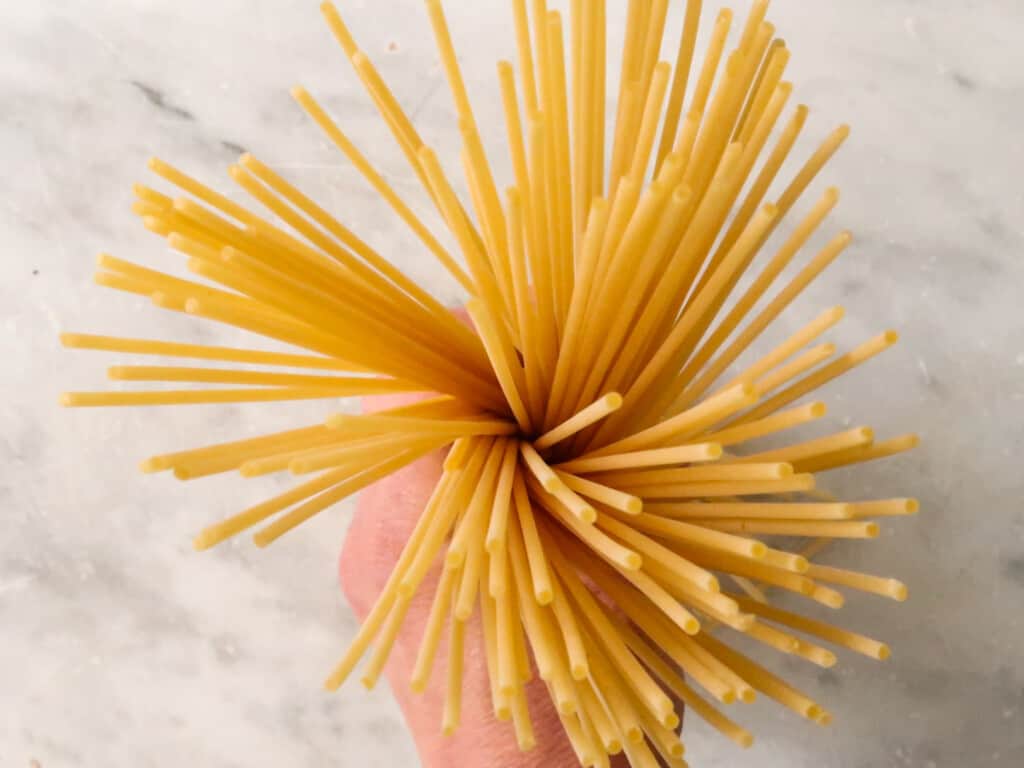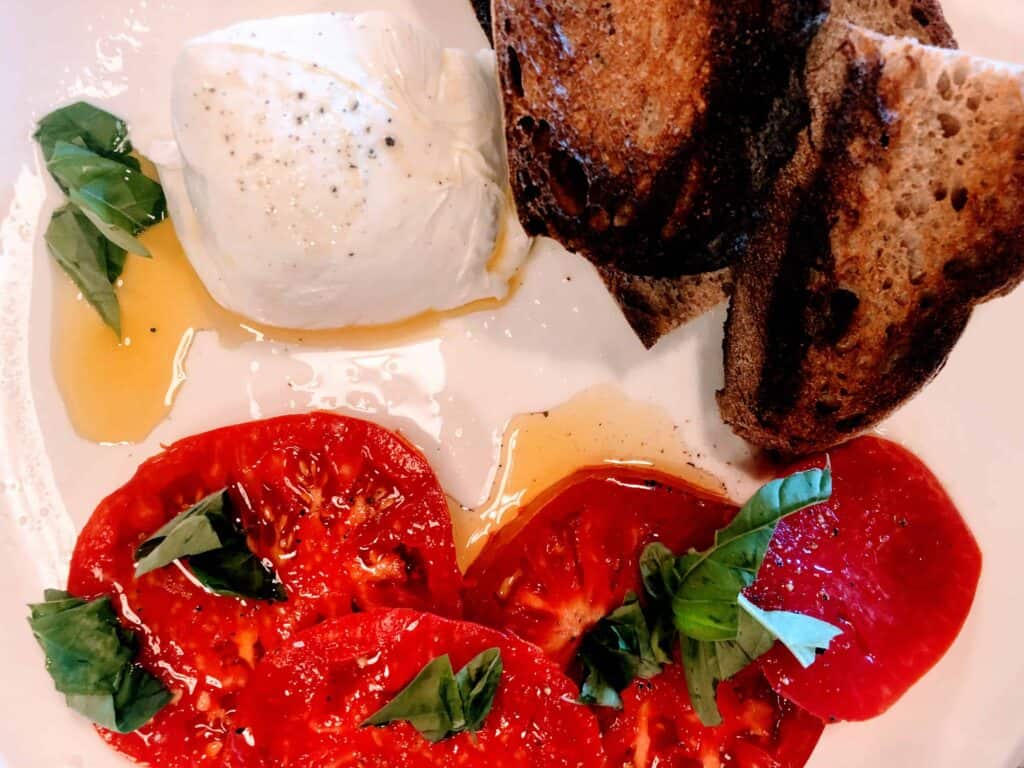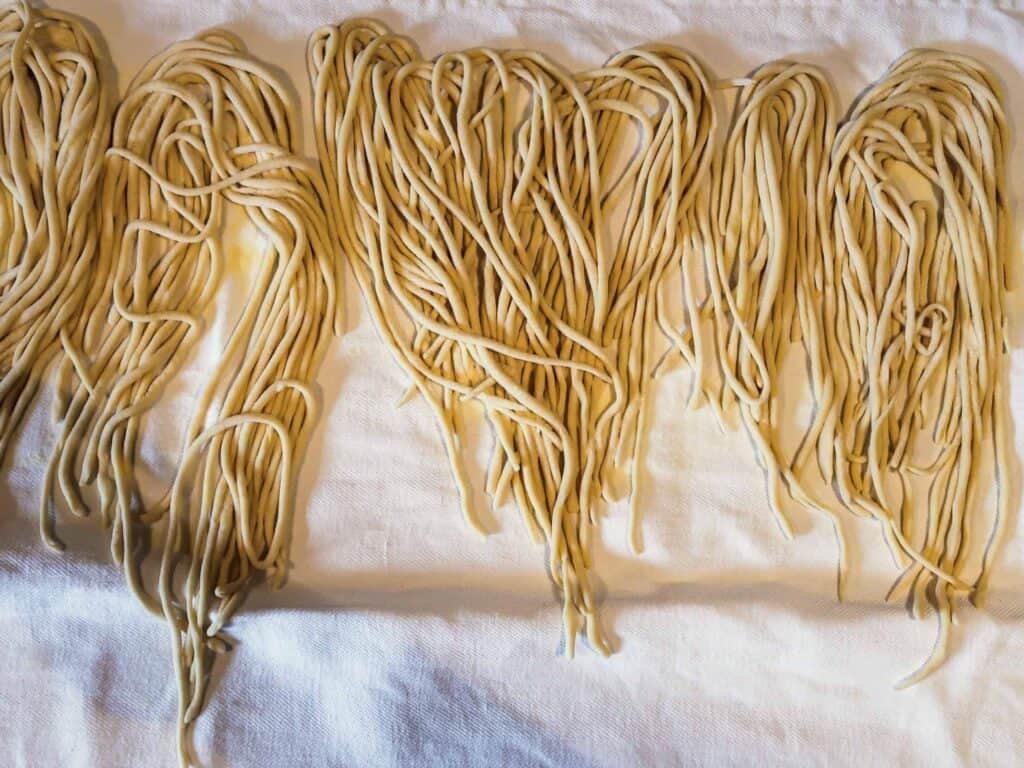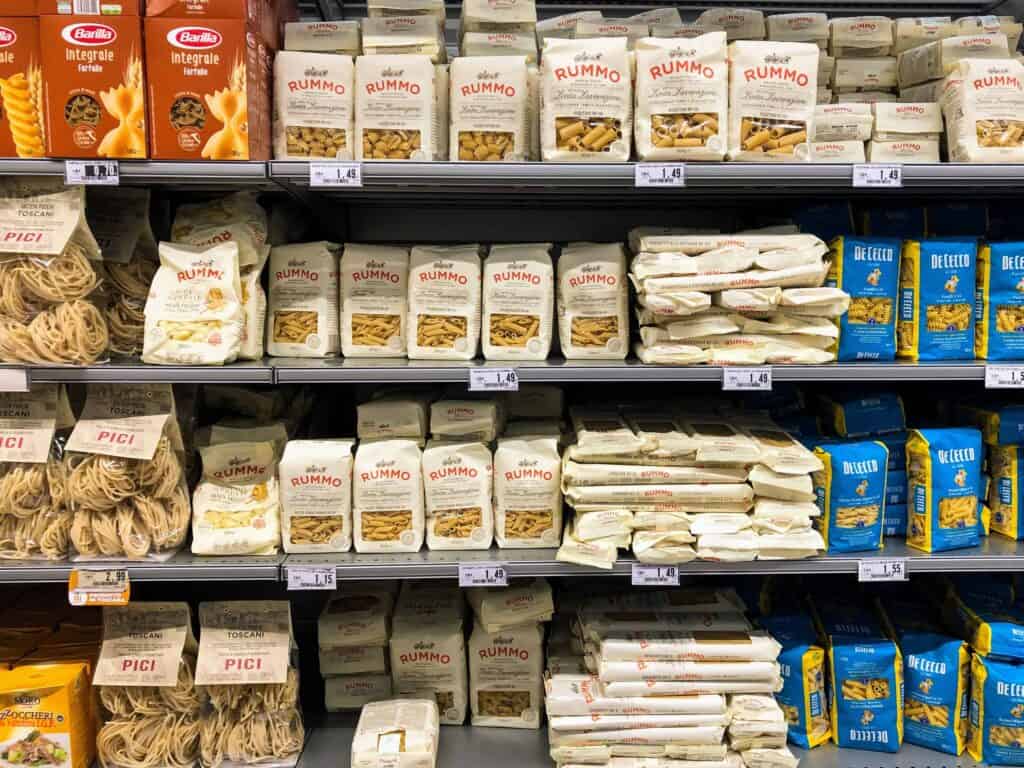Last updated on April 19th, 2024
Have you ever wondered why pasta tastes so much better while you’re in Italy?
Why is it so tough to replicate it when you’re back home?
Many times it’s because you are overcooking your pasta – maybe not by much, but just enough to be the difference between mediocre pasta and a homerun Italian culinary masterpiece.
How to do that? Follow the golden rule: cook your pasta al dente.
We’ll break down:
- what al dente means
- exactly how to cook your pasta al dente
- things you need to consider
- how to test for it
If you follow our advice, you’ll be cooking pasta like a true Italian in no time. You’ll never reminisce about perfectly-cooked pasta again – because you will be making it at home in a snap!
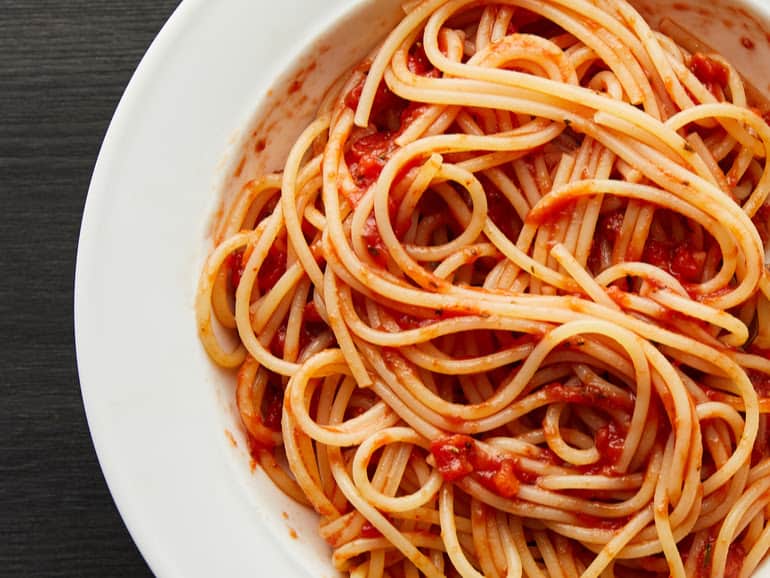
Jump to Section
What is ‘al Dente’?
Al dente literally means “to the tooth”, referring to how the pasta should be cooked firm to the bite. This means that when the pasta is cooked properly, al dente, you should feel a slight bit of resistance as you bite down. The pasta should not be mushy, overly soft, or gummy.
Check out our glossary of Italian Cooking Terms.
How to Pronounce ‘al Dente’
Al dente is pronounced ahl DEHN-teh.
Listen to it here:
What Does Pasta al Dente Look Like?
Al dente pasta, when cut on the cross-section, will have a slightly white bit in the middle but just ever so small.
Some Italians believe the perfect pasta should be eaten when this white bit in the middle has just disappeared but it’s extremely difficult to get the pasta to the table and into your mouth at this exact point as it is almost impossible to predict how much the pasta will continue to cook (because of residual heat) before it goes into your mouth.
Because of this, many Italians cook their pasta based on the ever-so-slight white bit they see in the center, knowing that with the residual heat, that white bit will cook through just to the right point as it is served.
How To Cook Pasta Al Dente
For more detailed instructons, check out our guide on How To Cook Pasta Like an Italian
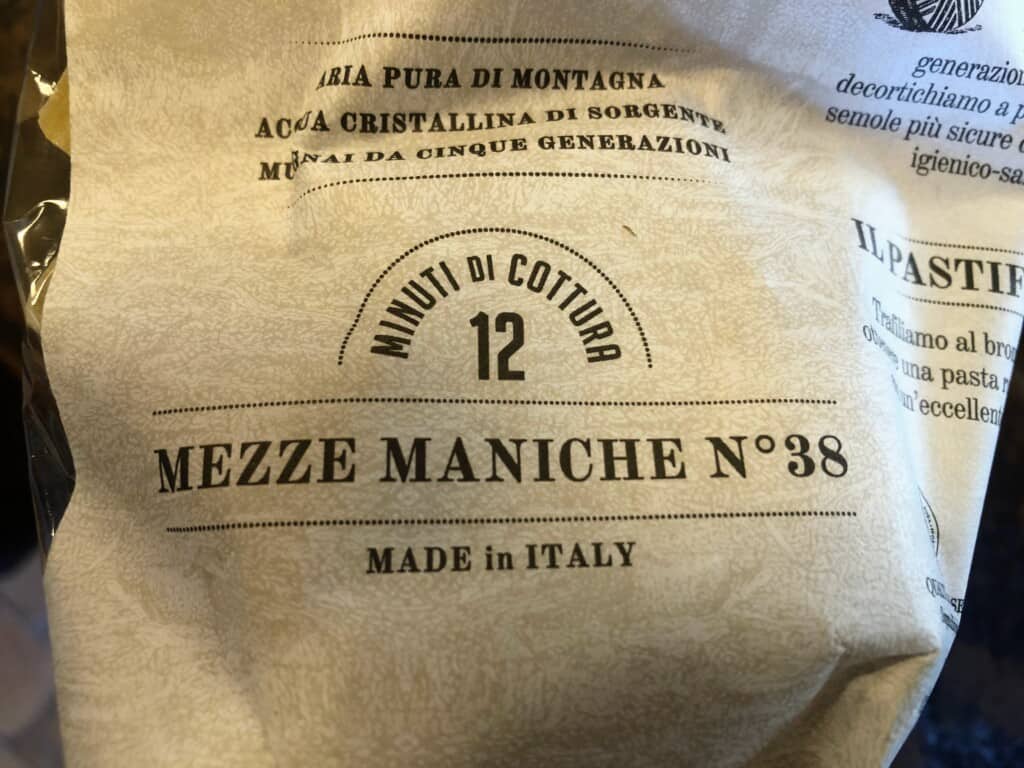
How to Cook Dried Pasta al Dente
- When cooking pasta secca or dried pasta, the first thing you need to be sure of is getting your pasta water back up to a rolling boil after you put the pasta in the water (the moment you add the pasta the water temperature will drop). Start your timer.
- Begin checking the pasta 1-2 minutes before the package’s suggested cooking time. The best way to test your pasta is by trying it. After years of trying pasta, I have burned myself countless times and you might too but it’s part of the learning process!
- Drain your pasta. The main thing you will need to consider before draining your pasta is how you will be finishing it. Are you finishing it in another pan? Are you stirring in the sauce off the heat directly in the serving bowl? Are you going to be baking the pasta?
Good To Know: Most packaging times account for the pasta being finished in a pan over heat with its sauce. You should remove the pasta from the water about 1-2 minutes before the package’s suggested cooking time. This is for dishes such as carbonara, cacio e pepe or other creamy sauces.
How to Cook Fresh Pasta al Dente
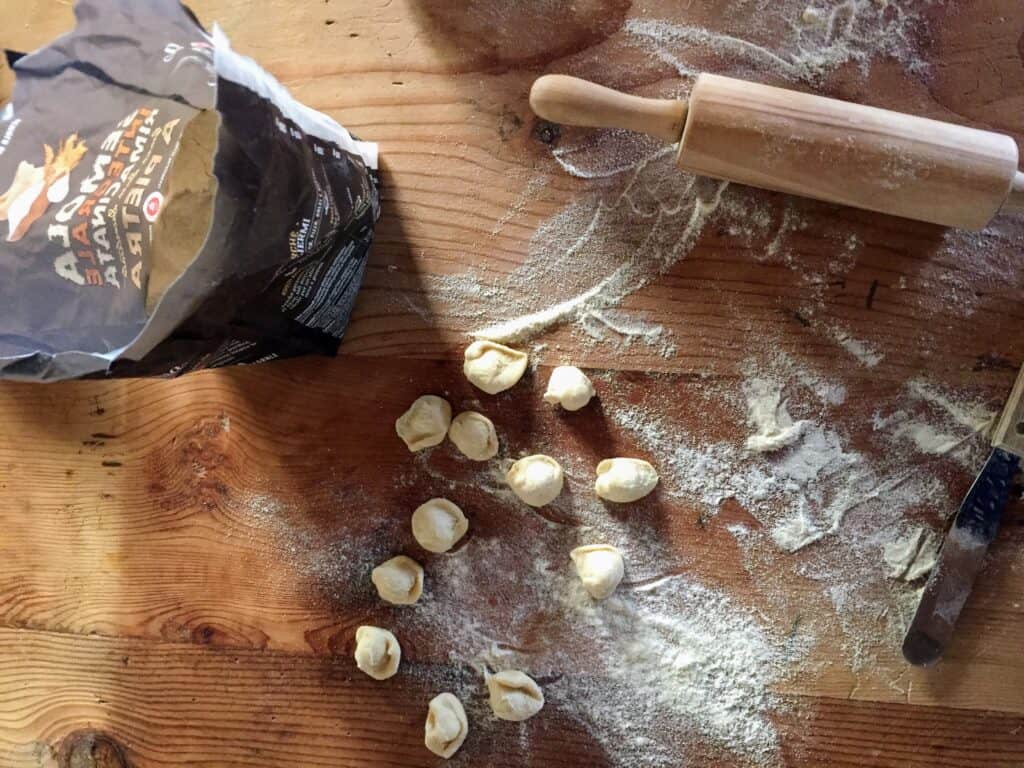
If you are using a fresh pasta sauce such as pesto or tomato and mozzarella (and you won’t be tossing the pasta in a skillet), try to get the pasta out right when it hits the al dente description above. The cool air and sauce will slow down the cooking process and it should be perfect in a minute or two when you serve it.
If you are going to use the pasta in a baked pasta, get the pasta out quite early, as much as 3-4 minutes before the package suggests (even if it seems incredibly underdone) because it will cook in the oven for another 30 minutes.
I often cut the pasta on a cutting board and then pop one half into my mouth. If I feel a slight resistance and see a bit of white in the center I drain the pasta immediately.
Tip: Have your colander set and ready to go in the sink so you aren’t scrambling at the last minute when your pasta is already al dente.
Pasta al Dente – Fresh vs Dry Pasta

Fresh pasta, known as pasta fresca, should be cooked al dente just as dry pasta but it’s slightly harder to drain the pasta at the exact right time as fresh pasta can go from al dente to overcooked in a matter of 20 seconds.
My best advice is to try it a minute before the package instructions tell you it should be done, just like dried pasta. If you feel like the pasta is just about al dente, get it out of the water immediately as the residual heat will continue to cook the pasta. By the time it gets to the table, it will be perfect.
Check out our Favorite Italian Pasta Brands!
Stuffed Pastas

It is quite challenging, even for Italians to get stuffed pastas just right unless you are a pro. The best advice we can give you is to cook the stuffed pasta to the recommended cooking time and then drain it.
After cooking stuffed pasta for over ten years now I can confidently say that the more you cook things like ravioli the better you get at it but sticking to the packaging instructions is your best bet if you are starting off.
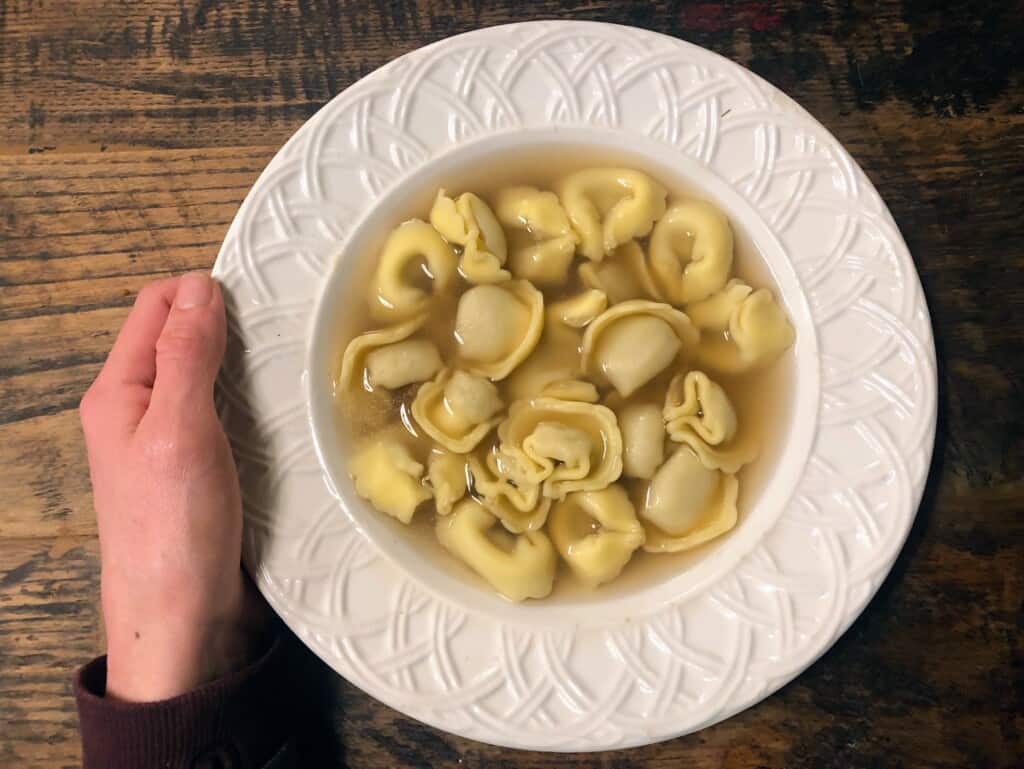
Eat Like An Italian: Check out our comprehensive guide to pasta etiquette, including how to eat your al dente pasta like a pro: Is it Illegal to Break Pasta in Italy? + Quick Guide to Italian Pasta Etiquette.
Learn a Trick: Read The Secret Ingredient That Takes Any Pasta Sauce to the Next Level.
Do you enjoy making and eating Italian pasta? If so, check out these recipes:
Orecchiette Pasta Recipe
Pici Pasta Recipe – How To Make Tuscany’s Hand Rolled Spaghetti
Tagliatelle Recipe + How to Pronounce It
Cacio e Pepe Recipe – Pronounce it and Make it Like an Italian (+ Audio)
Fresh Pomodoro Sauce Recipe – An Italian Summer Tradition
Pomodoro Sauce Recipe – Made With Canned Tomatoes
Creamy Kale Pasta Recipe
Italian Kale Pesto Recipe
Aglione Sauce Recipe
Pappardelle alla Boscaiola Recipe
Pasta al Dente FAQ
Italians also prefer their rice cooked al dente meaning the individual grains don’t get mushed together and have a slight give to them when you bite them. You can almost taste a slight crunch but not quite.
When pasta is overcooked and mushy to Italian standards they call it stracotto, literally translating to overcooked in English.
No, Italians either set a timer or look at a clock. Many old-school Italians don’t even do this but they don’t stray too far from the kitchen. They stay close to the pot of water and try the pasta frequently.
Molto al dente refers to pasta that is very uncooked, by 3 or 4 minutes. The reason you might want to cook your pasta like this is if you are making a pasta al forno or baked pasta which will continue to cook in the oven for 30 minutes or so. By doing this, you avoid pulling your beautifully golden brown baked pasta out and biting down on mushy pasta that has turned into baby food.
